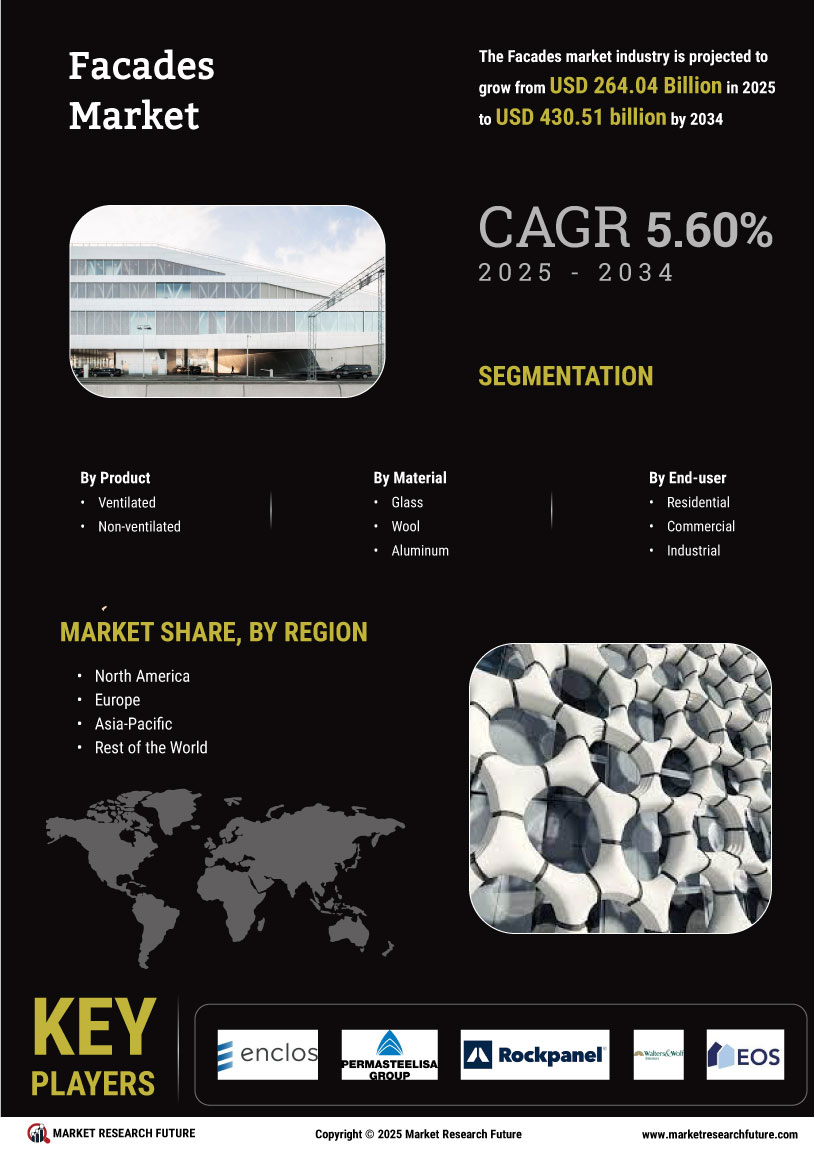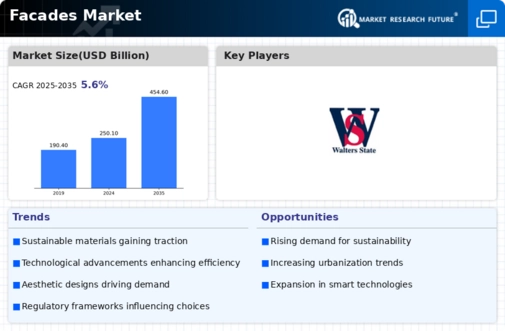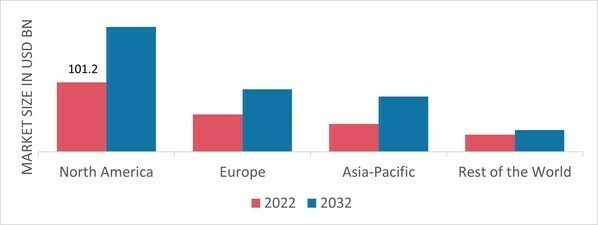Market Growth Projections
The Global Facades Market Industry is projected to experience substantial growth over the coming years. With an estimated market value of 250.1 USD Billion in 2024, the industry is expected to expand significantly, reaching 454.6 USD Billion by 2035. This growth trajectory indicates a robust compound annual growth rate (CAGR) of 5.58% from 2025 to 2035. Such projections highlight the increasing demand for innovative facade solutions driven by urbanization, sustainability, and technological advancements. The market's expansion reflects broader trends in construction and architecture, suggesting a dynamic future for facade technologies.
Technological Advancements
Technological advancements play a crucial role in shaping the Global Facades Market Industry. Innovations such as smart glass and dynamic facades are transforming traditional building designs. Smart glass, which can change its transparency based on environmental conditions, enhances energy efficiency and occupant comfort. Furthermore, the use of Building Information Modeling (BIM) in facade design allows for more precise planning and execution, reducing waste and improving project timelines. These technological developments not only meet modern architectural demands but also align with the projected market growth, which is expected to reach 454.6 USD Billion by 2035.
Sustainable Building Practices
The Global Facades Market Industry is increasingly influenced by the shift towards sustainable building practices. As environmental concerns gain prominence, architects and builders are prioritizing energy-efficient materials and designs. This trend is reflected in the growing adoption of green facades, which utilize plants and other natural elements to enhance energy efficiency. For instance, the integration of photovoltaic panels in facade designs not only reduces energy consumption but also contributes to the aesthetic appeal of buildings. This movement aligns with global sustainability goals, potentially driving the market's growth as it is projected to reach 250.1 USD Billion in 2024.
Aesthetic Trends in Architecture
Aesthetic trends in architecture significantly influence the Global Facades Market Industry. The demand for visually appealing buildings has led to the exploration of diverse facade materials and designs. Architects are increasingly incorporating unique textures, colors, and patterns to create striking facades that enhance the overall urban landscape. This trend is particularly evident in commercial buildings, where branding and visual identity are paramount. As a result, manufacturers are compelled to innovate and offer a wide range of facade solutions that cater to these aesthetic demands, further propelling the market's growth.
Regulatory Standards and Building Codes
The Global Facades Market Industry is also shaped by evolving regulatory standards and building codes that emphasize safety and energy efficiency. Governments worldwide are implementing stricter regulations regarding building materials and energy consumption, compelling manufacturers to innovate and comply. For example, the introduction of energy performance standards in various regions has led to the increased use of insulated and energy-efficient facade systems. This regulatory landscape not only ensures the safety and sustainability of buildings but also drives market growth as stakeholders seek compliant solutions in an increasingly competitive environment.
Urbanization and Infrastructure Development
Rapid urbanization and infrastructure development significantly impact the Global Facades Market Industry. As cities expand, there is an increasing demand for residential and commercial buildings, which in turn drives the need for innovative facade solutions. Urban areas are witnessing a surge in high-rise constructions, necessitating the use of advanced facade materials that can withstand environmental challenges. This trend is evident in emerging economies, where urban populations are growing at unprecedented rates. Consequently, the market is likely to benefit from this urban expansion, with a projected CAGR of 5.58% from 2025 to 2035.












